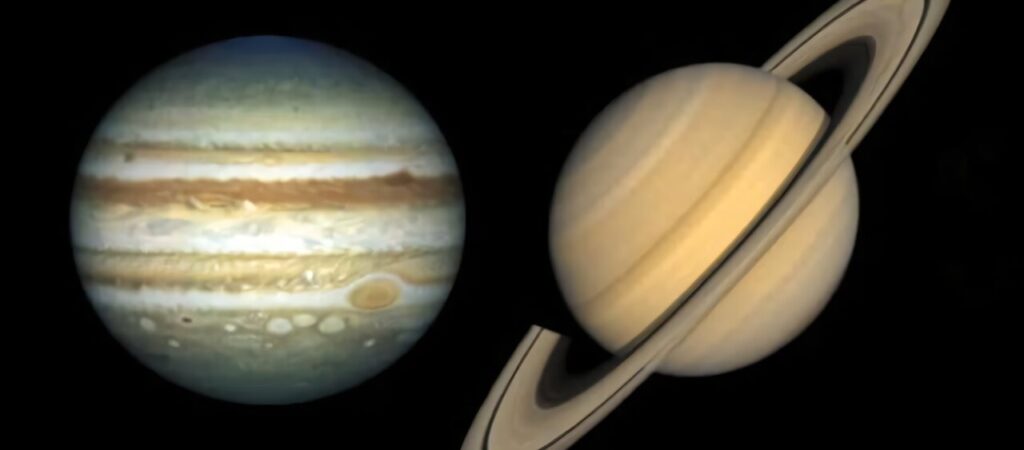
The James Webb Space Telescope (JWST) is poised to revolutionize the search for exoplanets, particularly those akin to Jupiter and Saturn. Recent research suggests that JWST’s advanced imaging capabilities could enable the direct detection of these gas giants, a feat previously thought challenging due to their cooler temperatures and greater distances from their stars.
Published in The Astrophysical Journal Letters, the study led by Rachel Bowens-Rubin from the University of Michigan explores how JWST’s Mid-Infrared Instrument (MIRI) imaging, without the use of coronagraphy, can identify exoplanets with similar characteristics to our solar system’s gas giants. This breakthrough could significantly enhance our understanding of planetary systems beyond our own.
Challenges in Exoplanet Detection
Detecting exoplanets is a complex process. Traditional methods like the transit and radial velocity methods have been instrumental but are not without limitations. These techniques often suffer from observational biases, making direct imaging the gold standard for accurate detection. However, direct imaging has been challenging, especially for planets like Jupiter and Saturn, which are cooler and located farther from their stars.
The JWST, with its high-resolution observing modes and superb infrared sensitivity, was designed to overcome these challenges. Its NIRCam and MIRI coronagraphy have successfully imaged young sub-Jupiter-mass exoplanets and mature gas giants. Yet, they struggled with detecting planets similar to our own gas giants.
New Research and Findings
The new study, titled “NIRCam Yells at Cloud: JWST MIRI Imaging Can Directly Detect Exoplanets of the Same Temperature, Mass, Age, and Orbital Separation as Saturn and Jupiter,” introduces a novel approach. The researchers utilized JWST’s general observing program, “Cool Kids on the Block,” focusing on gas and ice giant exoplanets around low-mass stars within 6 parsecs (approximately 19.5 light-years).
“We demonstrate that 21 μm MIRI imaging can detect planets with the same temperature, mass, age, and orbital separations as Saturn and Jupiter,” the authors note.
This method could reveal a significant population of cold giant planets, potentially altering our understanding of planetary system architectures.
Implications for Exoplanet Science
Exoplanet scientists have long sought methods to find cold giants like Jupiter and Saturn, which are under-represented in the known exoplanet population. Past research, including a 2021 microlensing survey, suggested an average of 1.5 low-mass giant planets per solar system. Moreover, radial velocity surveys indicated a prevalence of giant planets less massive than Jupiter, often near the water snowline.
“If these trends hold, low-mass cold giant exoplanets may be among the most common types of exoplanets in the galaxy,” the study authors suggest.
Technical Advancements
The researchers focused on three systems from the JWST’s program: Wolf 359, EV Lac, and AD Leo. They employed MIRI’s F2100W broadband imaging mode, which is sensitive to wavelengths where cold planets are brightest. This mode proved superior to NIRCam coronagraphy for systems within about 20 parsecs (65 light-years).
The study also examined the impact of cloudy exoplanet atmospheres on detection, finding that a combination of clear and cloudy atmospheric models best reproduced the spectra of Jupiter and Saturn.
Future Prospects
This research underscores the JWST’s potential to image Jupiter and Saturn analogs, paving the way for the first direct characterization of cold giant exoplanets. As data-reduction methods improve, the sensitivity of MIRI imaging is expected to enhance further.
“The strategies outlined in this work point the way toward uncovering a potentially substantial population of cold, low-mass giant exoplanets,” the researchers conclude.
The findings suggest that our solar system, once considered an oddity, may be more typical than previously thought. As the JWST continues to explore the cosmos, it promises to place our solar system in the broader context of planetary systems throughout the galaxy.
For more insights on space and science, subscribe to our newsletter and stay updated on the latest discoveries and innovations.





